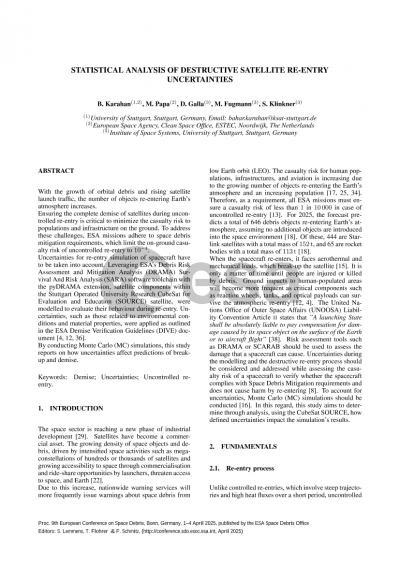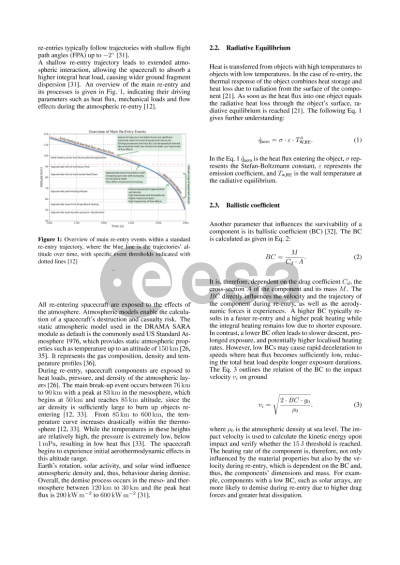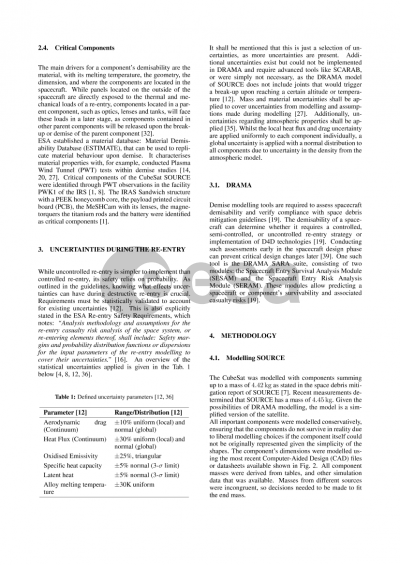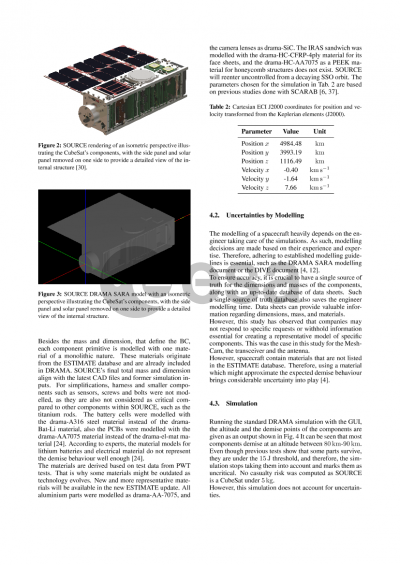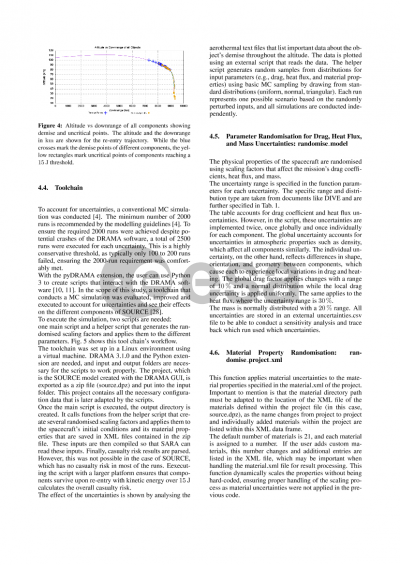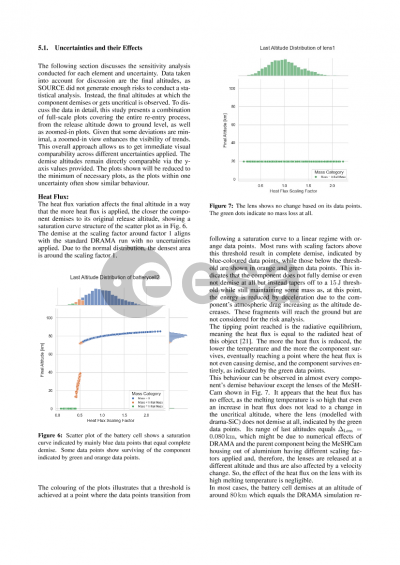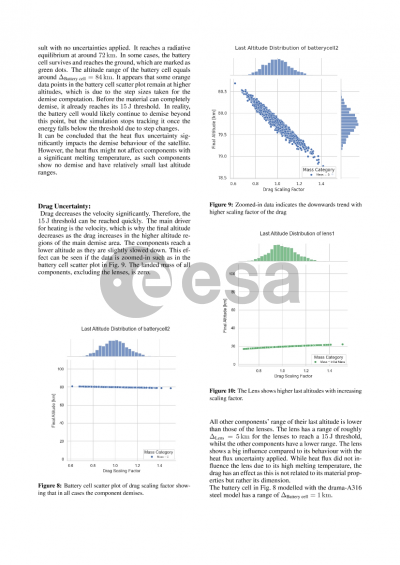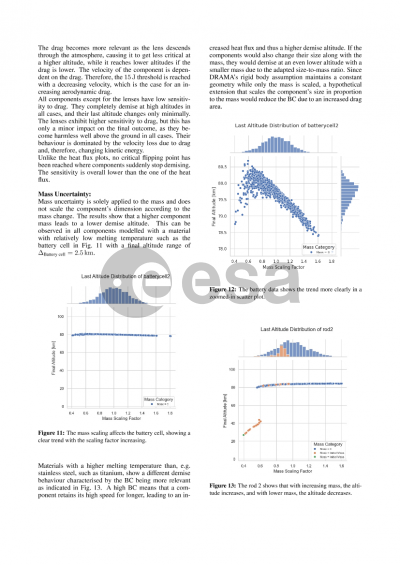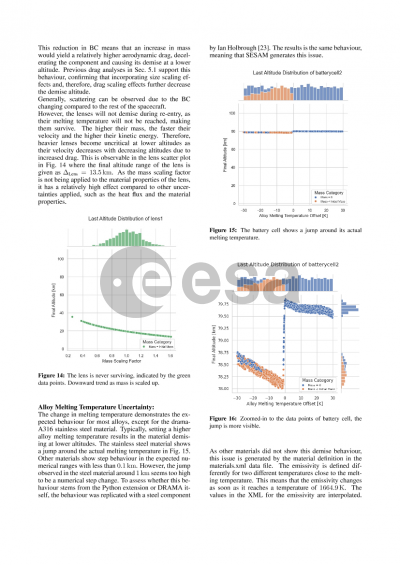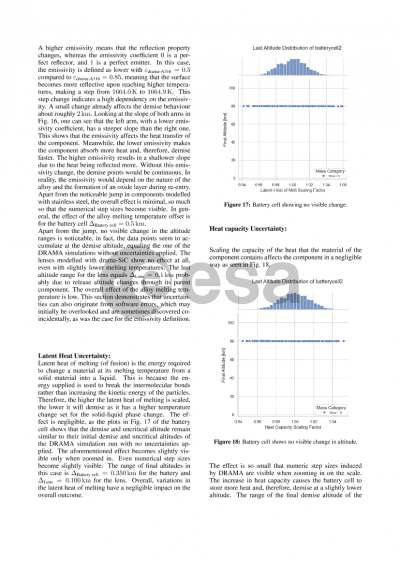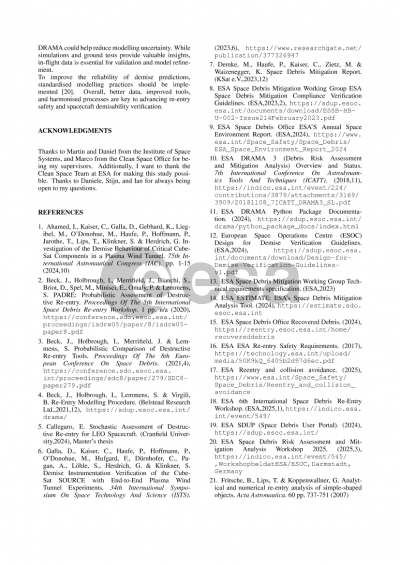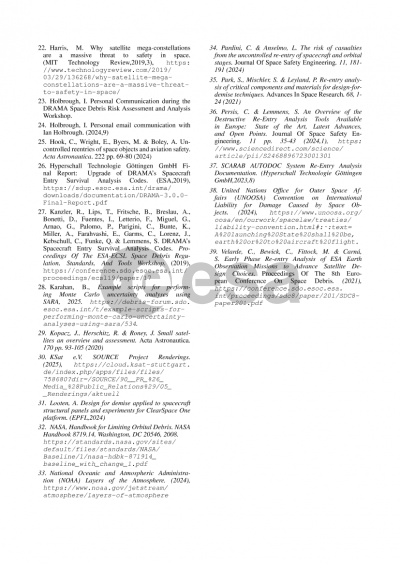Document details
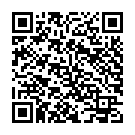
Abstract
The increasing number of satellites in Low Earth Orbit (LEO) due to intensified space activities, mega-constellations, and commercial opportunities has raised significant concerns about the sustainable use of space. With the growth of orbital debris and rising satellite launch traffic, the number of objects re-entering Earth's atmosphere continues to grow.
Nationwide warning systems, such as the one triggered in March 2024 by the re-entry of International Space Station batteries, demonstrate the importance of proactive measures. This paper presents the results of the study performed to support the European Space Agency's (ESA) commitment to Zero Debris and helps understand uncertainties during destructive re-entry.
Ensuring the complete demise of satellites during uncontrolled re-entry is critical to minimize the casualty risk to populations and infrastructure on the ground. To address these challenges, ESA missions adhere to the space debris mitigation requirements, which limit the on-ground casualty risk of uncontrolled re-entry to 10^-4. Re-entry, break-up and demise of satellites and their components are subject to significant uncertainties, and the impacts these uncertainties have on simulation results are to be evaluated as part of this paper.
This study focuses on enhancing the understanding of re-entry break-up processes and applying the uncertainties in satellite demisability simulations. Leveraging ESA's Debris Risk Assessment and Mitigation Analysis (DRAMA) SARA software toolchain with the Python extension, satellite components, such as those used within the SOURCE (Stuttgart Operated University Research Cubesat for Evaluation and Education) satellite, are modelled to evaluate their behaviour during re-entry. The components range from titanium rods, magnetorquers, batteries and electrical boards to camera lenses.
Applying uncertainties outlined in the ESA Dive document, such as environmental conditions and material properties with Monte Carlo simulations, and performing statistical analyses, the study evaluates how uncertainties affect predictions of break-up and demise. These uncertainties are often overlooked while assessing the spacecraft's demisability behaviour for Space Debris Mitigation requirements. A statistical analysis is performed to quantify the impacts of parameter variations and uncertainties on the demisability predictions. The findings are compared against experimental plasma wind tunnel data previously performed at the Institute of Space Systems (IRS) as part of the SOURCE verification campaign and SCARAB simulation results.
The results are part of my bachelor thesis within the ESA Clean Space Office supported by the Institute of Space Systems (IRS) of the University of Stuttgart. By accounting for uncertainties during the assessment of a spacecraft's demisability behaviour, this research supports the sustainable use of space and the reduction of space debris. This study underscores the importance of designing satellites for complete demise during re-entry.
Supervisors:
Marco Papa (ESA)
Daniel Galla (IRS)
Martin Fugmann (IRS)
Responsible Professor:
Prof. Dr. Sabine Klinkner (IRS)
Preview
